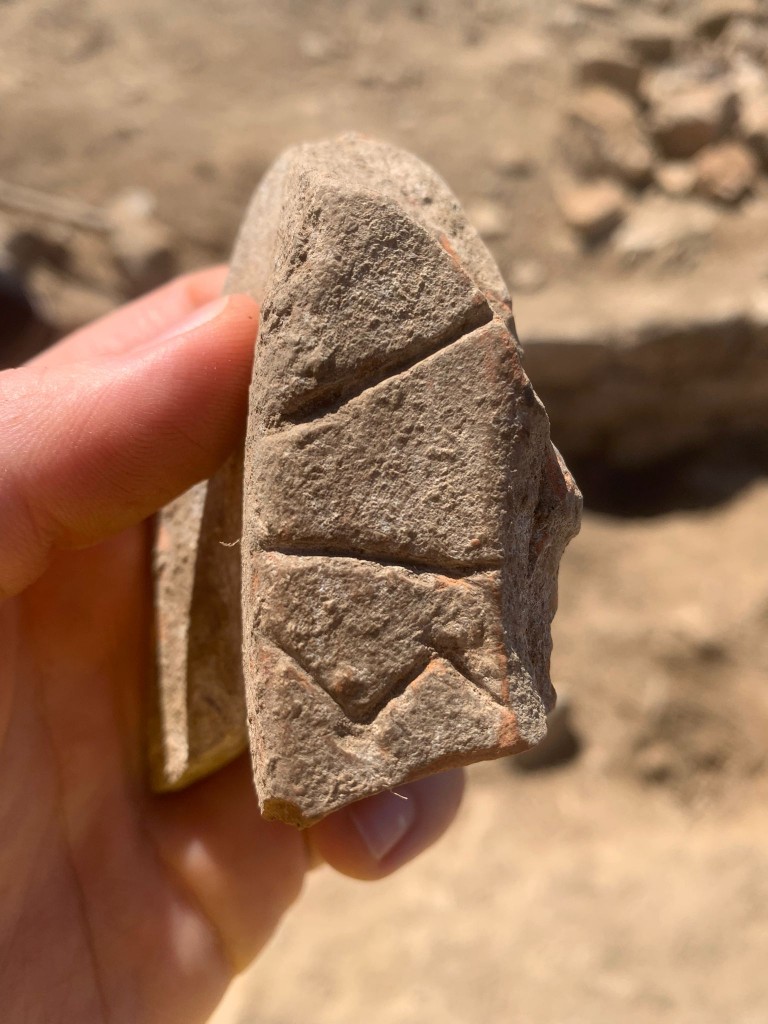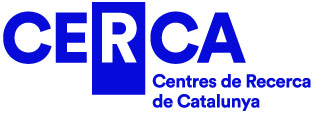
2021 archaeological excavation campaign at the Coll del Moro archaeological site (in Gandesa, Tarragona), which took place from June 21 to July 9, within the framework of the UB-GRACPE and ICAC research project Formation, development, and dissolution of the Iberian culture in the lower course of the Ebro river (9th-1st century BC), has allowed completing the delimitation of the site on the northwest side, where it has been possible the documentation of an about 30 meters wall section, incorporating the tower already known in the defensive system.
It has been possible to document a section of the wall in about 30 meters.
The project led by Rafel Jornet (UB – Món Iber ROCS), Maria Carme Belarte (ICREA-ICAC), Jordi Morer (Món Iber ROCS), David Asensio (UB – UAB – Món Iber ROCS), and Joan Sanmartí (UB) has documented also, the access door of the fortified settlement, which was built in Iberian times and reused in the Iberian-Roman phase of the settlement. Protected by the tower, the door is about 3 m wide, and opens onto a funnel-shaped passageway, narrowing inward. The wall was possibly reinforced by a ditch, where the current N-420B road passes.

In the Ibero-Roman period the door was modified, reducing its width.
The walls that delimit this passageway have a preserved height of about 4 m. The door is accessed from the outside through a stone-built ramp, uncovered in a 12 m long section, which spans a slope of the terrain of about 2 m; all this gives monumentality to the whole. In the Iberian-Roman period, the door was modified, reducing its width. This discovery allows us to know how to improve the character of the site at the time of the conquest, probably a castellum or fortified square, similar to that of other sites known in Catalonia at the same time.
Regarding the archaeological materials recovered in this campaign, among the most outstanding finds highlights an Iberian inscription on a ceramic jar, in the entrance area. According to a preliminary study by the epigraphist Joan Ferrer i Jané (University of Barcelona), it would correspond to an anthroponym.

The research team of the University of Barcelona and the Catalan Institute of Classical Archaeology funded by the Department of Culture of the Generalitat de Catalunya, the Catalan Agency of Cultural Heritage, and the City Council of Gandesa, undertake archaeological works in the Coll del Moro site since 2014, and has carried out both geophysical and pedestrian prospecting in the habitat area and in the lowlands that extend to the south and east of the Coll del Moro territory.
Related information:
Jornet, R.; Belarte, M. C.; Sanmartí, J.; Asensio, D.; Morer, J.; Noguera, J. (2020): “El Coll del Moro (Gandesa, Tarragona) y su contexto territorial: formación y desarrollo de un asentamiento urbano protohistórico”, Trabajos de Prehistoria 77 (1), 199-215.
Tribuna d’Arqueologia 2018-2019, vídeo de la conferència “Intervencions al jaciment Ibèric de Coll del Moro de Gandesa (Terra Alta) entre 2014 i 2018” (abril de 2019).
Jornet, R.; Belarte, M. C.; Sanmartí i Grego, J.; Asensio, D.; Morer de Llorens, J. (2016): “Noves excavacions al nucli fortificat del Coll del Moro de Gandesa (2014-2015)”, Actes de les I Jornades d’Arqueologia de les Terres de l’Ebre (Tortosa, del 6 al 7 de maig de 2016), p. 345-358.
Related news:
«New archaeological fieldwork campaign at Coll del Moro site», ICAC, June 19, 2020.
«New archaeological works campaign at the settlement Coll del Moro (Gandesa, Tarragona)», ICAC, July 4, 2019.
«Documentat un nou espai artesanal del segle III aC al recinte fortificat del Coll del Moro de Gandesa (2017)», ICAC, 27 de juliol de 2017.
«Confirmat el trull del segle III aC al Coll del Moro de Gandesa (2016)», ICAC, 4 de novembre de 2016.
«Trobat el trull més antic de Catalunya al poblat ibèric de Gandesa (2015)», ICAC, 31 de juliol de 2015.
«Trobades les restes d’un fortí romanorepublicà a Gandesa (2014)», ICAC, 18 de novembre de 2014.





